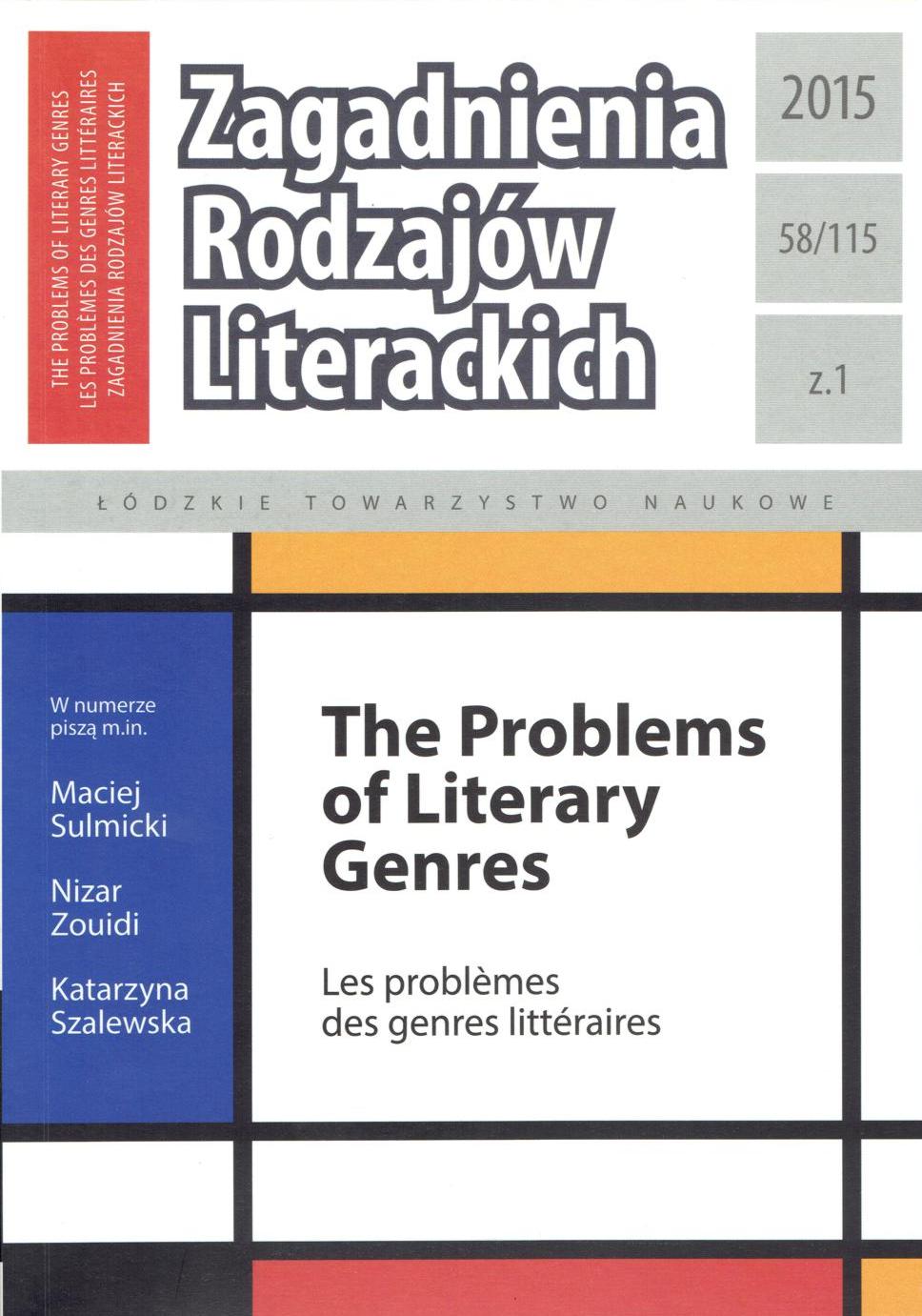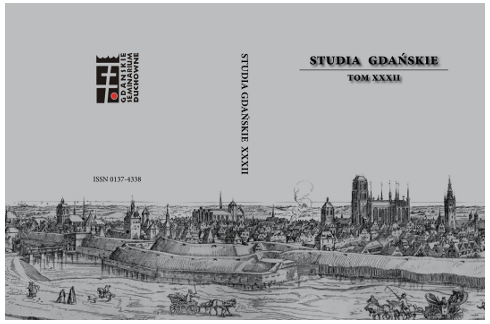
Urban Genres – an Attempt at Defining the Genological Landscape
Urban Genres – an Attempt at Defining the Genological Landscape city in the literature urban literature genology urban genres textual arcade
More...We kindly inform you that, as long as the subject affiliation of our 300.000+ articles is in progress, you might get unsufficient or no results on your third level or second level search. In this case, please broaden your search criteria.

Urban Genres – an Attempt at Defining the Genological Landscape city in the literature urban literature genology urban genres textual arcade
More...




Providing a critical instrument to identify structures of victimization, René Girard’s program is in fact very affine to Critical Rationalism methodology as developed by Charles Popper and widely assented in contemporary epistemology. In order to proof this thesis, in a first step, Girard’s understanding of epistemology is reconstructed. His occasionally very strict objection to any form of relativism thereby is shown to be due to an obviously polemic context. In claiming his theory to be scientific, Girard indeed knows very well that it is the specification of science to approach things not apodicti‑ cally, but hypothetically, and he clearly assents this principle. In a second step, typical misunderstandings of both the Mimetic Theory and Poppers fallibilism are analysed and parallelized. They properly consist in an exaggeration of some aspects, while com‑ plementary aspects are suppressed. With the Mimetic Theory, just this uneven exag‑ geration can be explained as happening precisely in constellations of rivalry, as among the „hostile brothers”, and yet as happening unintentionally and therefore being so hard to detect. Therefore, the claim of showing this connection, as raised by the Mimetic Theory, itself cannot be presented in an apodictic manner because it so would force the counterpart into rivalry about the alleged truth, which would so again deform it, NB on both sides of the disputation. Besides this rather „ethical” reason, there also is a strongly „epistemic” reason why Mimetic Theory and the uncovering of scapegoat mechanism should consider themselves to be hypothetical and fallible: Without a continuous rising of this self‑critical attitude, the self‑vindicatory and self‑enclosing spell of myth would have never been broken.
More...
Artykuł stawia sobie za cel odpowiedź na pytanie, od któ‑ rego powinien zaczynać się każdy traktat z dziedziny nauk społecznych: kim jest człowiek? Droga do uzyskania odpowiedzi wiedzie dwutorowo: poprzez wykorzystanie perspektywy biofizycznej i antropologicznej. „Dramat” ludzkiego życia naświetlony został bowiem dzięki metodzie mimetycznej René Girarda, a także bioelektronicznej teorii autorstwa ks. Włodzimierza Sedlaka. Niniejszy tekst jest klasyczną rozprawą teo‑ retyczną, której efektem jest system pojęć i hipotez modelowych, opisu‑ jących zależności między poszczególnymi elementami. Ogólna hipoteza zawarta w artykule brzmi następująco: człowiek jest istotą bioelektromi‑ metyczną. Hipoteza ta posłużyła autorowi jako przesłanka m.in. do roz‑ ważań nad implikacjami dla ładu społecznego.
More...
Artykuł jest mimetyczną interpretacją Ślubu Witolda Gom‑ browicza. Zastosowanie teorii René Girarda w funkcji metajęzyka poz‑ wala na zauważenie częściowej dekonstrukcji, jakiej polski pisarz doko‑ nuje względem koncepcji mordu pierwotnego (i buntu syna przeciwko ojcu) stworzonej przez Zygmunta Freuda. „Poprawka” Gombrowicza (zapożyczona od Szekspira) polega na prezentacji przekonania, zgodnie z którym rywalizacja (oraz jej efekt – morderstwo) jest specyficznym, naśladowczym modusem międzyludzkich relacji, a jej aspekt przedmi‑ otowy (m.in. erotyczny) pozostaje kwestią drugorzędną.
More...
In a common interpretation of Dostoyevsky’s The Brothers Karamasov, Dmitri Kara‑ masov is held guilty of murdering his father in a moral sense, while the character of Smerdyakov is put beyond the range of ethic consideration as he is seen as an allegory of the merely executing factor of the act of violence. Hence, his suicide is read as a proof that the evil itself doesn’t take over responsibility; in face of the accusation it fades away, leaving the charge of responsibility to the human moral subject. Dostoyevsky, however, seems not wanting to stress such a kind of moral hero that, in this interpretation, could be seen in Dmitri. With introducing Alexey in his preamble, he is in fact presenting us a „weak” hero, leading us to another understanding of the story. Yet Alexey is still not the weakest. It is Smerdyakov. What this article pleads for is that Smerdyakov is systematically made a scapegoat, as Dostoyevsky is illustrating in several pertinent scenes. It is only coherent that interpreters, while completely ignoring this fact, contin‑ ue this scapegoating in dehumanising him by taking off him of all ethic consideration, reducing him to a personification of a merely mechanic component. By contrast, this is an apology for Smerdyakov as a human being. And as a son of Fyodor and brother of Alexey, Dmitri and Ivan.
More...
This is an attempt of a mimetic interpretation of Acts 5:1‒11. The article juxtaposes the narrative of Ananias and Sapphira with the story of the sudden death of Nadab and Abihu from Lev 10:1‒7. The Author argues that apart from situational resemblance, both passages are similar on a deeper level: they are set at the beginning of new orders. Ananias and Sapphira are Adam and Eve of the early Christian commu‑ nity and like them violate their marital unity. Since marriage has become a symbol of Christ’s faithful and loving relationship to humanity, the couple’s treacherous connivance constitutes the ‘original sin’ of Christi‑ anity. Nevertheless, as a sacrificial text, Acts 5:1‒11 has had a negative influence on Christian religiosity.
More...
In contemporary discussions on cultural, political, religious and theological issues, aimportant place is occupied not only by the victim, but the ambivalence that is assoated with it. Victims often become offenders. They refer to the fact of being a victim, that justifies this type of behavior. It seems that there is no way of „diabolical circoffender‑victim‑offender. The Dramatic Theology which was developed in Innsbrucgives an opportunity to find a way out of this circle. It uses the results of René Girarmimetic theory. It is important to distinguish between the mythical logic of pagaism, in which the process of sacralization takes place, and the biblical tradition whiccondemns this logic. Christ preaches the Gospel (Good News) of his Father who is entirely free of violence. As a result he himself becomes an object of people’s aggressioWithout compulsion he responds with no violence and in this way he transforms tdestructive forces of sacral violence in loving devotion to the Father.
More...
This paper discusses Girard’s discovery of the undoing by the biblical tradition of a mechanism on which human culture rests world‑ wide. His literary studies brought him to the analysis of religious tradi‑ tions and to the insight that sacrificial means are used in all human con‑ duct to counterbalance the mimetic dependence by which people fear to lose their autonomy. Their common form is scapegoating, but Christ’s radicalization of the biblical message has exposed and invalidated its efficacy. The article discusses the quandary that emerged from this and the possible answer to the threatening derailment of society.
More...
Człowiek w naturalny sposób wchodzi w relacje z Bogiem, czego wyrazem jest stan i akty wiary. Odniesienie do Stwórcy stano‑ wi źródło nadziei, iż element miłości będzie czynnikiem dominującym w relacji do Niego. Przedmiotem niniejszego artykułu jest interpretacja fenomenu wiary w nauczaniu Benedykta XVI przy zastosowaniu metody dramatycznej wypracowanej w szkole innsbruckiej. W pierwszej części artykułu zaprezentowano metodę dramatyczną jak też dramaturgię zbawczą, w której za Raymundem Schwagerem wyodrębnia się pięć ak‑ tów. W drugiej dokonano dramatycznej analizy nauczania Benedykta XVI w kwestii wiary. W nauce Papieża można wskazać na następujące zjawiska współczesne związane z wiarą: geneza kwestionowania wiary, proces powrotu do Boga oraz docelowa wizja zjednoczenia z Bogiem na fundamencie wiary. W artykule wykorzystano literaturę obejmującą publikacje teologów innsbruckich, jak też wypowiedzi papieskie. W op‑ arciu o krytyczną analizę dostępnych tekstów sformułowano wnioski.
More...
Artykuł prezentuje zarys treści czteroletniego kursu na studiach doktoranckich i podyplomowych, którego kanwę stanowi teoria mimetyczna Girarda spajająca wykłady z antropologii, teologii biblijnej i dogmatyki. Na pierwszym roku podejmowane są zagadnie‑ nia początków Izraela, następnie okres Drugiej Świątyni, na trzecim – synoptyczne i Pawłowe ujęcie nowości Jezusa Chrystusa, na czwartym – Janowa wizja zbawienia człowieka. Ponadto, po ogólnym wprowad‑ zeniu, w ciągu trzech kolejnych lat Autorzy kursu korzystają z trójfunk‑ cyjnej hipotezy Georgesa Dumézila dotyczącej kultury europejskiej, rozważając kryzys w świecie idei, kwestię przywództwa oraz konkretną, duszpasterską pomoc. Mimetyczna interpretacja wszystkich sakra‑ mentów z Eucharystią w centrum przynosi świeże spojrzenie na sprawy pastoralne i duchowe.
More...
When René Girard applied his discovery about the role of mimesis in human social life to analyse the origin of culture and religion, he tackled Freud an Lévi‑Strauss for placing sexual relations rather than the sacrificial solution of rivalries at the centre. In so doing he ignored the role of gender in the sacrificial schemes by stressing that rivalries indiscriminately affect both genders. With the help of studies by Levinas and Kristeva, of some anthropological discoveries, and an alternative reading of the biblical trajectory from Genesis to the Book of Revelation, the article tries to show how Girard’s mimetic theory can both uphold gender neutrality and advance a Christian feminist option.
More...



